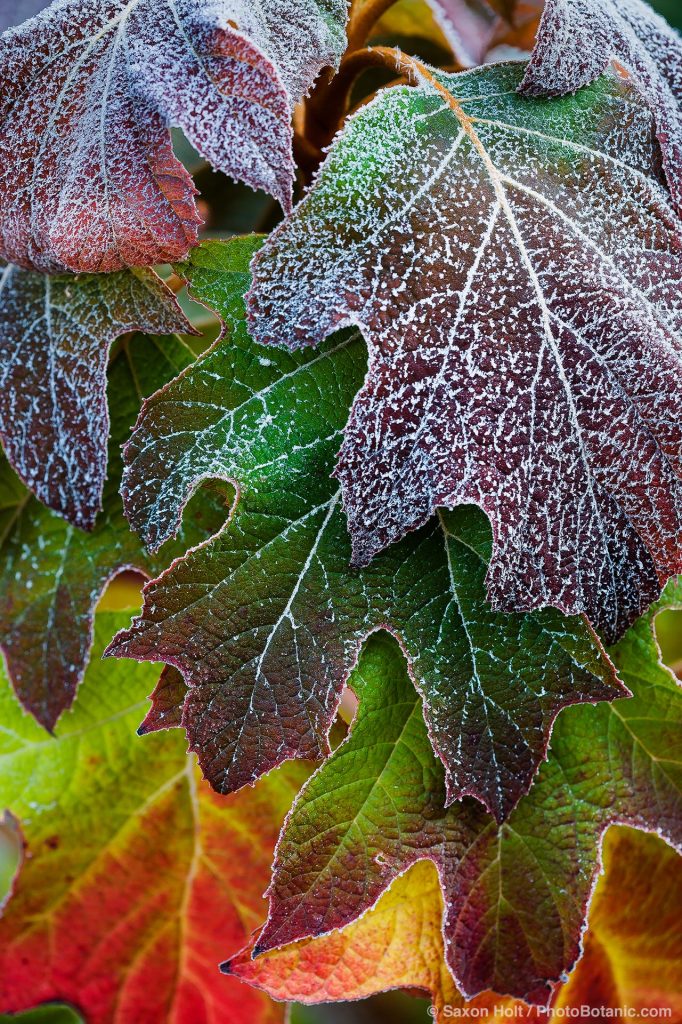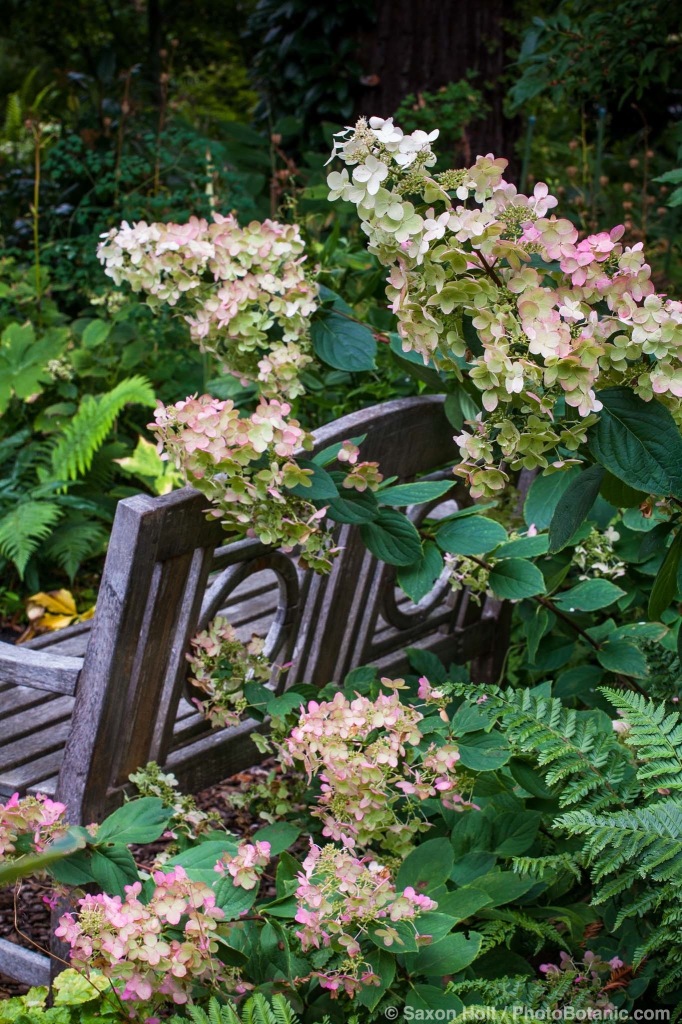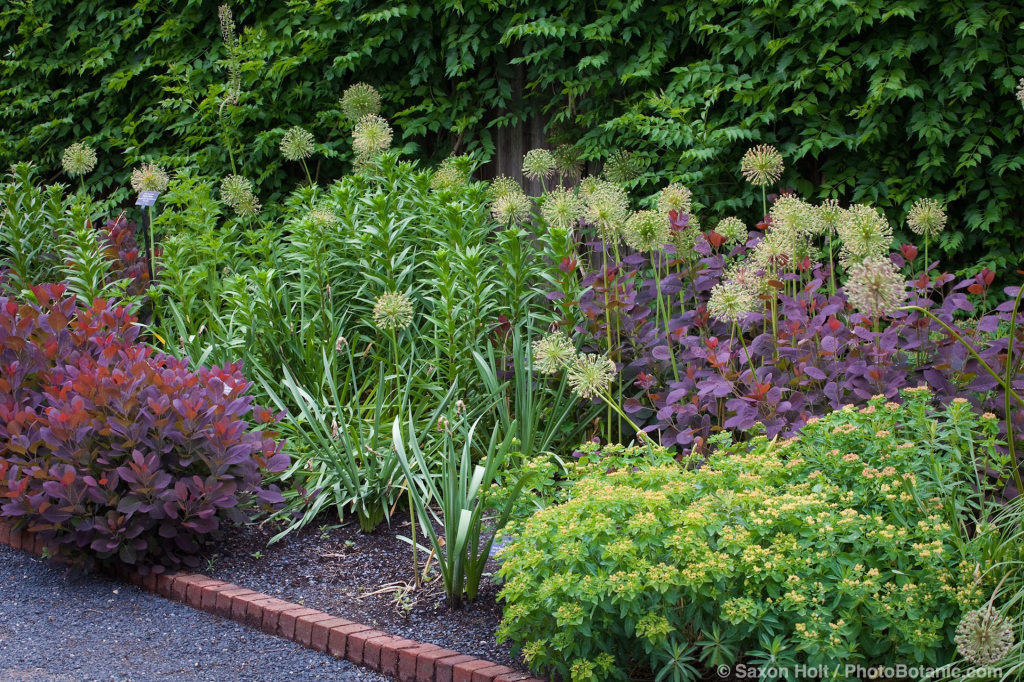
This is the last lesson in “Think Like a Camera”, Section Two of the PhotoBotanic Garden Photography Workshop. Throughout this section I have been talking about seeing the garden with a camera: how to compose, how to use focal points, using leading lines, points of view, space and shapes within your frame when you are taking a photograph.
As you consciously look in a garden for ways to capture what you see with your camera, look for the details and vignettes that are pieces of the puzzle. You are likely to share your photos as an album, gallery, or group share of some kind, and a good photo story uses different viewpoints and details. Tightly composed shots often convey an intimacy and spotaneaity that is only hinted at in a wide shot.
Vignette of thyme in flowering groundcover tapestry by stepping stone path.
I am not talking here simply about macro, close-up shots; that is another subject and will get its own lesson in Section Three. For this lesson I want you to look for vignettes, a quick impression or detail of a single scene in the garden. Vignettes tend to be combinations of only a few elements that you combine in the camera frame.
These ‘Blue Flame’ agaves, in a border at Succulent Gardens Nursery, are shown with some context, neither macro nor wide garden view – a vignette.
Vignettes can be macro shots, but it’s best if they include other elements; such as the frost on these Oak Leaf Hydrangea leaves:
It is not simply a picture of a leaf, it stacks up three layers in a combination of elements that tell a story, not just a story of leaf shape or the frost, but of how the plant grows, how it turns multiple colors in the autumn.
Always remember to use the entire space of your frame, and remember others will looking at the photo, too. Presume that each photo is more than eye candy and has a story to tell. The better you get at seeing the garden with your camera, the more your story will come through in your photos.
This is especially true with the tight composition of a vignette. Look at the “story” within the frost leaves. Imagine cropping the top off that hydrangea photo. You would no longer see how the leaves grow. Crop a bit off the bottom and you no longer see the leaf shape in that third row. These are elements of my story. Your point of view might be different.
Now, let’s find vignettes in a garden, specifically the magnificent O’Byrne garden at Northwest Garden Nursery in Oregon.
The wide view is nicely composed, uses all the tricks we have discussed in this chapter about framing, juxtaposition, and lines, but doesn’t quite get the essence of what I was feeling. I was giddy seeing the bench, at the end of this woodland walk, enveloped by the flowering hydrangea. How wonderful, I thought, to use this abundantly flowering shrub to shelter the bench.
The vignette shot distills that down to a simple story and brings intimacy to the scene.
You will often find such details as you think about what the camera sees as opposed to what your eyes see. I saw that bench in the wide view, but, until I came closer, the story was about the woodland garden. As you hunt for details, make certain the camera sees exactly what you see
.
Here in the shrub border in my own garden.
I remember walking down my driveway one mid-summer day falling in love, once again, with Ceanothus ‘Marie Simon’ because of its durable and multifaceted beauty. It flowers in early spring, provides a drought tolerant backbone to my shrub border, and its seed pods are downright stunning.
The seedpods.
This is not a macro close-up, the red-brown seeds here are seen on purple stems with luscious green foliage, all against the soft silver blue of the lavender hedge. Now that is a vignette: a garden picture with a simple story that is hard to miss.
You may find yourself in a wonderful garden with camera at the ready—but no clue as to where to start taking pictures. A snapshot may come easily, but you know there is a photographer’s picture to be had. Try looking for similarly detailed vignettes. They will help you understand how the garden works.
In visiting the Chicago Botanical Garden I was delighted to see edibles mixed into one of the borders:
The photo, above, shows none of the delight of this garden. The delight is actually in the details, in the few elements that are needed to tell the story, as shown in the following photo, with the camera much closer to the plants:
Every rule can be broken, even my own rule that vignettes involve just a few elements. The following photograph presents a small section of a much larger garden story; it is not simply an image of only a few elements. In this tapestry of groundcovers, in Maile Arnold’s garden, the detail, the simple message, is “tapestry.”
It is not meant to be a picture of any one plant; there are actually eight different plants in the composition. In my eye, they combined as one idea, one detail, one vignette of the garden that is part of the larger story of this garden. A good garden has multiple stories to tell. As you tell your own story, try to distill each idea into a vignette to accompany the “big picture.”
See the garden through your camera’s eye. And fill its frame.
The next section of PhotoBotanic Garden Photography Workshop is Think Like a Gardener and we start to look for themes. We are all garden lovers here, we all bring certain expertise and bias. Let’s learn to use those assumptions to develop a distinctive style, our own voice as we tell stories with the camera.
I will wrap up with a quick review of the six lessons with one of my
favorite photos. Perhaps it’s one of my favorites because it uses every trick of composition.

Slender leaves of purple elderberry, (Sambucus nigra ‘Black Lace”) with chartreuse foliage Spirea ‘Limemound’
Perhaps it’s one of my favorite photos because it uses every trick of composition: an interesting point of view (Lesson 2.4) on this wonderful vignette (Lesson 2.6), using leading lines (Lesson 2.3) to divide the frame (Lesson 2.1) into shapes (Lesson 2.5) so that the leaves become the focal point (Lesson 2.4).
Remember to use these lesson tags to find more articles that use these techniques.
Most importantly go out and shoot. Plan for success. Dedicate some time when the light is good, take your tripod so you have to slow down, think about how you fill every frame. Think like a camera and find the photo.
Supplemental Posts
Frost in the Garden
Too Much Fun
Finding the Photo

















Leave A Comment